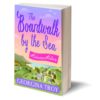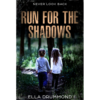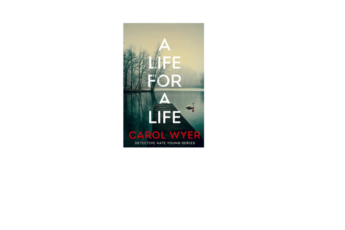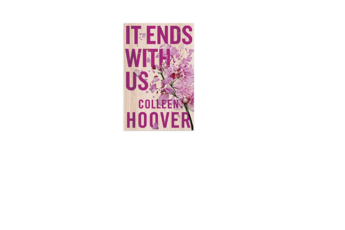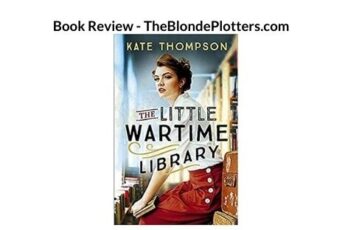Where to get Published?
The Blonde Plotters’ Guide to deciding what publishing option to choose.
We are a mix of indie published, small press and traditionally published authors.
So you want to publish a book too?
There is no right or wrong way to publish your book. One size does not fit all, it depends on your circumstances, your goals and your book
Which publisher or type of publishing is right for you?
First ask yourself – Why are you writing?
Fame? (Traditional or indie-publishing can achieve this but you might be better off becoming a reality-tv star!)
Literary acclaim? (Difficult to win awards etc without traditional publishing support)
To say “I’ve written a book”? (Do you need to even publish? If you’re not wanting to be a ‘professional’ writer you can indie-publish on a small scale)
Commercial success (money!)? (Traditional or indie-publishing. Swings and roundabouts as traditional publishing might get you more exposure, but your royalties will be tiny compared to indie-publishing when you get to keep all your profits)
Personal memoir, posterity? (If it’s just to have a handful of books to give to family/friends then self-publishing assisted might be best)
Because you love writing? That’s the best way to write an excellent book and to enjoy the process. Writing rarely makes you rich or famous.
Where to get published for the first time?
Traditional – big five publishing houses: Penguin Random House, HarperCollins, Hachette, Simon & Schuster, Macmillan; medium size traditional publishers such as:Bloomsbury, Houghton Miflin Harcourt, Scholastic, Kensington, University presses and many others; small independent publishers such as:Bookouture, Canelo, Joffee Books, Bloodhound Books, Salt Publishing etc; self-publishing with assistance from the likes of Bookbaby or Draft2digital; and indie publishing where you go it alone and source from a variety of services.
Traditional – Big Five
Who are they? Penguin Random House, HarperCollins, Hachette, Simon & Schuster, MacMillan
- They work with Mainstream appeal authors, Celebrity/Brand names, Commercial/Genre fiction, Non-fiction with a platform
- Value for author? Publisher bears financial risk, bookstore distribution, mainstream media coverage. You work with an editor who can improve your book.
- How to approach? Almost always requires an agent and a completed manuscript, but sometimes run submission windows
- What to watch for? Author receives an advance (may not earn out and for new authors it will be very small if at all), Publisher holds onto all rights for 5-10 years, Many decisions are out of the author’s control (cover, title), You may be unhappy with the level of marketing/attention because you’re a minor author and book “disappears” from shelves in 3- months. If the book doesn’t sell you could find yourself dropped. The author receives only a small percentage of the books’ royalties – around 10%.
Mid Size Publishers
Who are they? Bloomsbury, Houghton Mifflin Harcourt, Scholastic, Kensington, University presses and many others. Significant in size, Big 5 capabilities.
- They work with similar authors as Big 5, but might have niche appeal imprints also
- Value for author? Publisher bears financial risk, bookstore distribution, mainstream media coverage. You work with an editor to improve your book.
- How to approach? Doesn’t always requires an agent (see their guidelines), fiction requires a completed manuscript, or book proposal if non-fiction
- What to watch for? Author receives an advance-not always as much as Big 5 (may not earn out), Publisher holds onto all rights for 5-10 years, Many decisions are out of the author’s control (cover, title), May be unhappy with level of marketing and book “disappears” from shelves in 3- months. However, may be more innovative and flexible. Author earnings tend to be small – usually only around 10%.
Small and independent Publishers
- Who are they? Ranges from well-known traditionals to small, sometimes lacking experience, operations. Do your homework before committing. Some good new innovative publishing houses include: Bookouture, Canelo, Joffe Books, Bloodhound Books, Salt Publishing etc.
- Who they work with? Emerging first-time authors, and established ones. Some are more open to experimental, literary and less commercial work.
- Value for author? More personalised, possibly editorial, design and marketing support to rival larger presses. Usually offer better royalty earnings for authors
- How to approach? Rarely requires an agent, see guidelines
- What to watch for? May not receive an advance, wide variety of contracts (check them!), might not have physical bookstore distribution, you may be paying them, reduced media/review coverage, but some are more innovative in marketing and do better. There are some dodgy ones out there so do your research.
Indie publishing or self-publishing
Key characteristics? Authors are the publisher-managing the process, hiring and sourcing the right people and organisations to edit, design, publish, distribute and market their book. Author decides which distributers or retailers to deal with.
- Value for author? Control, control, control. You also keep all royalties and rights.
- What to watch for? Some authors don’t invest sufficient time and money to produce a quality product. First-time authors may not have the experience to know what the appropriate quality standard is and how to get high-quality help. Physical bookstores, mainstream media and professional reviewers will rarely offer help or coverage. You need to be digitally literate. Don’t think that indie publishing means just writing a book and then slapping it on Amazon – you have to be professional in your approach and get it edited, a cover made, consider your marketing plan etc.
- E-book and print services Ebook retailers include Amazon KDP, Nook, Apple and Kobo. Print-on-demand, CreateSpace and IngramSpark makes it affordable to sell and distribute paperbacks via online retail. There is no contract, they take a cut of sales and you can leave them at will.
- The Alliance of Independent Authors can provide you with guidance.
Self-publishing assisted:
Key characteristics Authors pay to publish. There are two types – those formerly known as vanity publishers who are there purely to make money out of authors and sometimes give a poor level of service and those which have been established to help indie authors who aren’t able to do everything themselves. They make their money from providing services to the author-editing, design etc. Generally, all rights and royalties remain with the author. Rare to have bookshop distribution.
- Value for author Get a book published without having to understand the publishing arena or source professionals. Cab be good for those with more money than time. The best providers offer a quality service comparable to traditional publishers, but really do your homework and don’t just pick a publisher based on an ad. Draft2Digital and Bookbaby are two new services who can assist.
- What to watch for? The marketing and publicity packages can be expensive and ineffective. Some companies will take advantage of author inexperience.
Marketing
- Whether traditionally published or small press and Indie, you will have to make some effort in promoting your book and having an online presence. Obviously if you go with a big publisher, they have specialist teams and you will be guided and supported. If you go indie, then you are going to have to do this all yourself.
- It might help you get a publishing deal if you have an already established online presence and therefore a ready readership/audience.
Whatever path you choose, be DETERMINED
- Agatha Christie was rejected continuously for 5 years and now her books have sold over $2bn
- The Tale of Peter Rabbit was rejected so many times Beatrix Potter decided to self-publish 250 copies. It has now sold 45 million
- The Help by Kathryn Stockett was rejected 60 times. If she’d stopped at 60, there would be no bestseller and no film. She didn’t give up and it was accepted on her 61st submission!
- Whether traditional or indie published, it is hard work so you will need determination and passion.
Remember the publishing industry has been changing
- The publishing industry has been disrupted, like so many industries and there has been a revival of small, niche publishing houses while the big ones have consolidated.
- Ten years ago traditional publishers controlled production, distribution and sales. Print books accounted for 99.8% of book sales
- 1994 Amazon was founded as an online bookstore
- November 2007 – the first e-reader, the Amazon Kindle was launched
- Amazon now has over a dozen active publishing imprints of its own. 7 out of the 10 top selling Kindle books were published by Amazon in 2016
- Audio books are now the fastest growing format
- Yet 2016 was a record year for book sales in the UK according to The Publishers Association…
It’s not how many books are selling – but where and who is publishing them…
- More than 50% of traditionally published book sales of any format in the US, happen on Amazon.com
- 85% of non traditionally published book sales of any format happen on Amazon.com
- May 2016, only three big five published authors who debuted in the past five years are making seven figures from their Amazon sales – print, audio or ebook.
- But… 14 indies who debuted in the same period are earning seven figures.
- Traditional publishing has been disrupted as authors start to demand better terms and deals
- Even successful authors like Neil Gaiman have said if they were starting out today they would like to be self-published
- Many of the big traditional publishing earners are legacy writers.
- Publishing has seen the rise of the author brand – blockbuster bestsellers account for one fifth of all bestselling books
- Successful thriller writer Barry Eisler turned down a $500,000 advance for two books in favour of self publishing. His gamble paid off.
Writing Resources
The author community is very generous with its help and advice and there are some excellent resources for an author beginning their indie publishing journey.
The following are some writers and resources we have used and would recommend. We are not earning anything from recommending these, but genuinely have found them useful.
Publishing Courses
There are lots of courses out there which claim to help writers, but there are a lot of these which only end up helping the person selling them. The best courses are from those who are writers themselves and have used tried and tested techniques to be successful.
- Mark Dawson’s Self Publishing Formula
- Joanna Penn’s The Creative Penn
- Jane Friedman
- The Alliance of Independent Authors
- Amazon
Publishing Tools
- Scrivener for writing your book as it really helps with organisation of a big manuscript
- Canva for creating all the visuals you will need
- K-lytics for finding the best Amazon categories for your book
- Vellum for formatting your books
Publishing Podcasts
Podcasts are a brilliant way of keeping up to date with the industry and learning.
- Story Grid Podcast
- Mark Dawson’s Self Publishing Formula
- The Creative Penn Podcast
- The Sell More Books show
We are The Blonde Plotters
https://www.facebook.com/
BlondePlotters
DeborahCarrAuthor
GeorginaTroyAuthor
GwynGBwriter
Kellyclaytonbooks
@BlondePlotters
@DebsCarr
@GeorginaTroy
@Gwyn GB
@KellyClayton01
